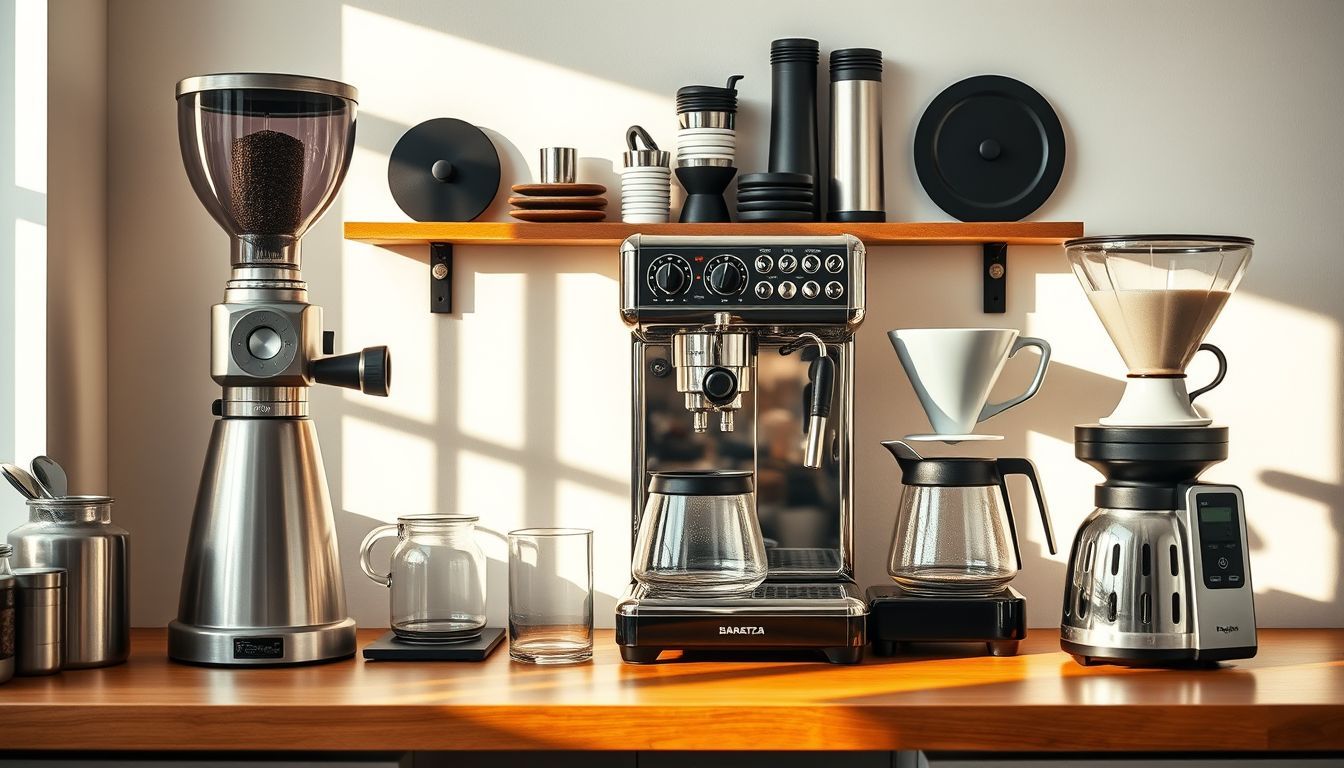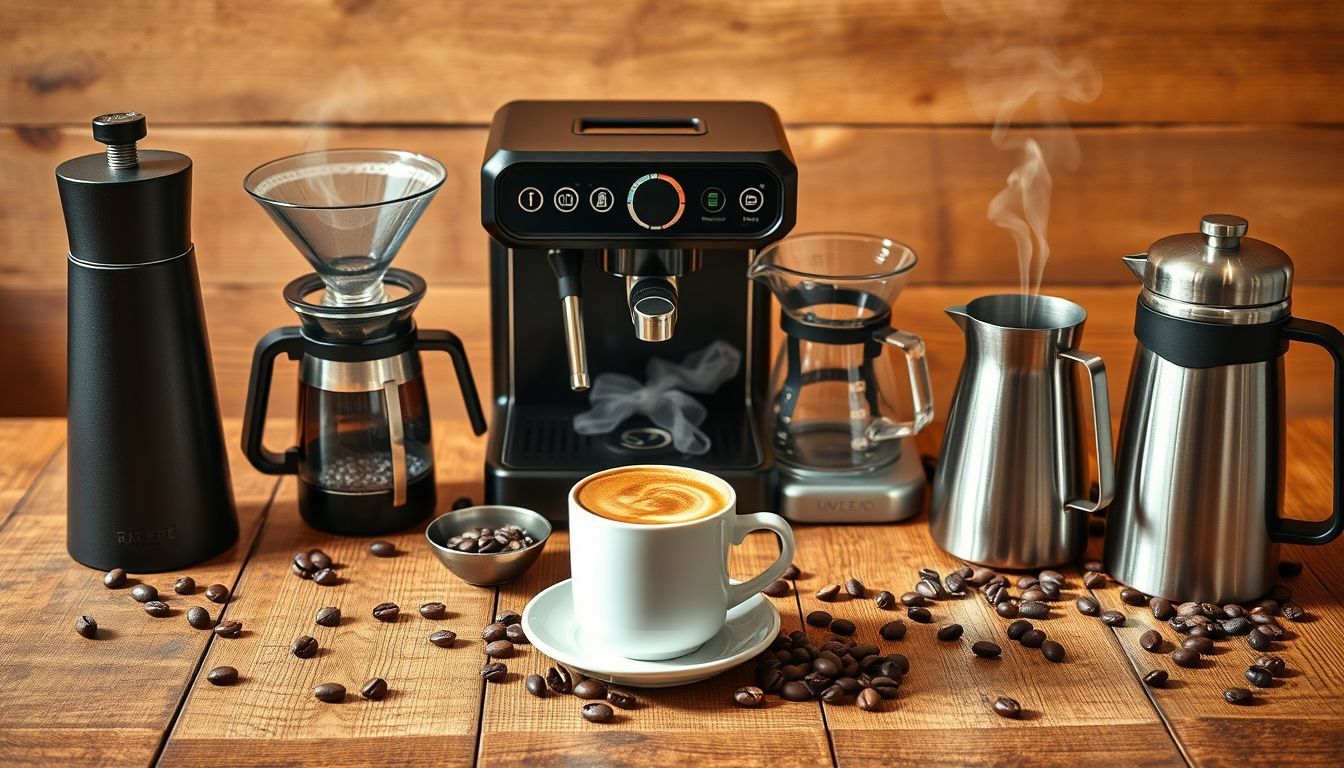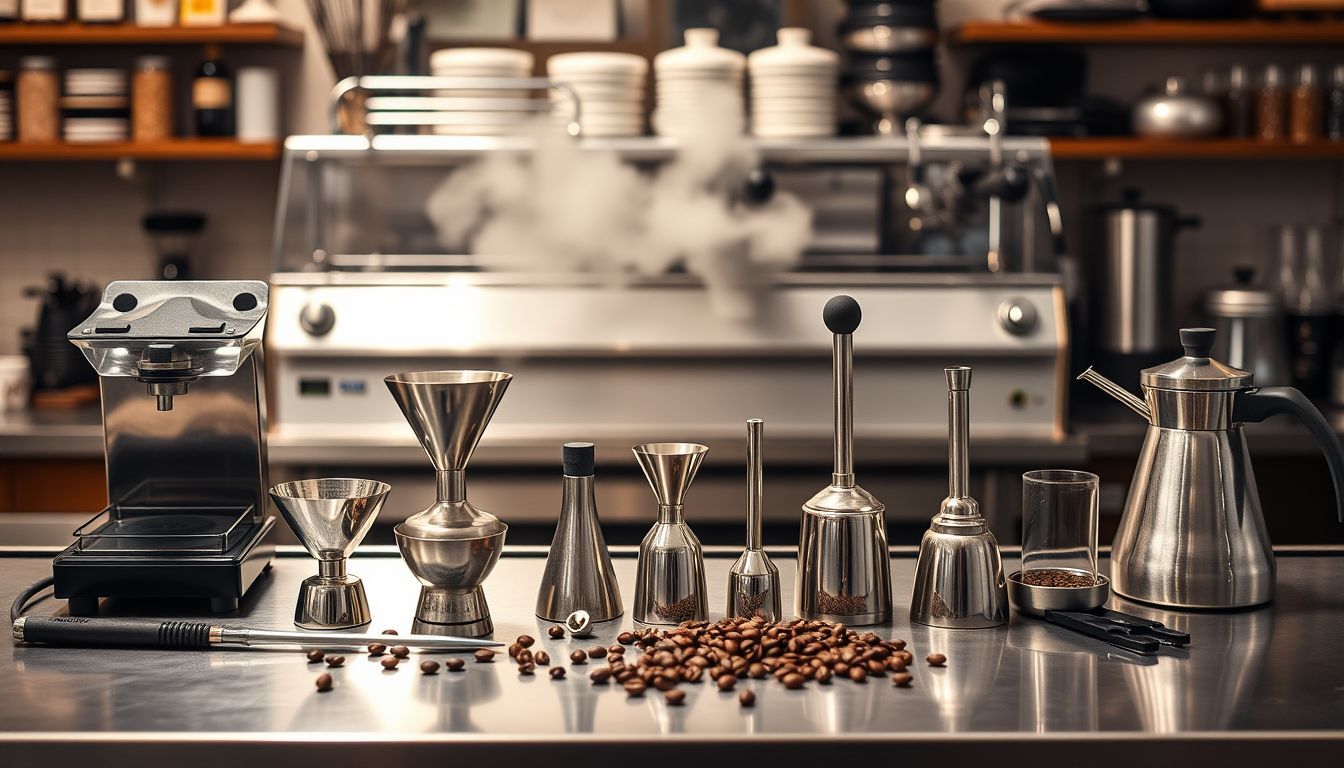Professional Barista Equipment You Can Actually Afford
Think pro-level coffee gear requires a second mortgage? This coffee analyst reveals the affordable equipment that delivers café-quality results at home.

Amazon Affiliate Disclosure
This post contains affiliate links. If you purchase through these links, we may earn a small commission at no additional cost to you.
Let me paint you a picture: You walk into a specialty coffee shop, order your usual cortado, and watch the barista work their magic. The precision, the technique, the equipment that gleams like it belongs in a spaceship—it's mesmerizing. Then you look at the price tags on that equipment and suddenly your cortado costs $4.50 instead of the $3,000 you'd need to recreate this setup at home.
Here's what the coffee industry doesn't want you to know: most of the "professional" results you're admiring come from technique and understanding, not from equipment that costs more than your car. After spending years analyzing commercial coffee equipment and watching countless home baristas achieve café-quality results, I'm here to let you in on a secret—you can build a genuinely professional setup without selling a kidney.
The key is knowing which features actually matter and which ones are just expensive ways to make you feel fancy.
The Professional Mindset vs. Professional Price Tags
What Makes Equipment "Professional"?
Before we dive into specific gear, let's establish what "professional" actually means in coffee terms. It's not about chrome finishes or digital displays that look like they could launch a rocket. Professional equipment delivers:
- Consistency: The same results, shot after shot, cup after cup
- Control: Precise adjustment of variables that affect taste
- Durability: Built to handle daily use without breaking down
- Speed: Efficient workflow for multiple drinks
- Reliability: Performs the same way every time
Notice what's not on that list? Brand prestige, Instagram-worthy aesthetics, or features that require a PhD to operate.
The Home Advantage
Actually, home baristas have some advantages over commercial operations. You're making 1–4 drinks at a time, not 200. You can take your time with each cup. You don't need equipment rated for 8 hours of continuous use. This means you can often get professional results with prosumer equipment that costs a fraction of true commercial gear.
The Grinder: Your Most Important Investment
Why Grinders Matter More Than Everything Else
I'll say it until I'm blue in the face: your grinder is more important than your espresso machine, your brewing method, or your Instagram-worthy setup photos. A great grinder with a mediocre espresso machine will outperform an expensive machine with a terrible grinder every single time.
Professional coffee shops use grinders that cost $2,000–$6,000. But here's the thing—they need that level of performance for hundreds of shots per day. You don't.
Budget Alternative: Baratza Encore ESP ($170)
If $400 makes you break out in hives, the Baratza Encore ESP offers surprising espresso capability for the price. It won't match the Sette's speed or fine-tuning ability, but it'll grind consistently enough to pull respectable shots.
Espresso Machines: Where to Spend and Where to Save
The Prosumer Sweet Spot: Breville Bambino Plus ($300)
For milk drink lovers, the Bambino Plus offers automatic milk texturing that rivals manual steam wands. It's not as tweakable as the Italian machines, but it's incredibly user-friendly and produces consistently good results.
Breville Bambino Plus
Brewing Equipment: Professional Results Without Professional Prices
Pour-Over: The Democratic Professional Method
Here's a beautiful truth about pour-over coffee: the equipment used in world championship competitions costs under $50. A Hario V60, Kalita Wave, or Chemex can produce coffee that rivals any café, regardless of how much they spent on their batch brewer.
- Hario V60 or Kalita Wave ($25–35)
- Gooseneck kettle with temperature control ($80–120)
- Digital scale with timer ($30–50)
- Quality filters ($10/month)
Total investment: Under $200 for championship-level pour-over capability.
And don’t overlook the kettle—precision pouring is essential. The OXO Brew Gooseneck Electric Kettle gives you the control you need without breaking the bank.
French Press: The Underestimated Professional Tool
Professional coffee tasters use French press for cupping—evaluating coffee quality. A quality French press like the Bodum Brazil French Press ($80) can produce full-bodied coffee that showcases bean quality beautifully.
The key is technique: proper ratios, correct water temperature, and precise timing. The equipment is simple; the results are anything but.
Accessories That Make the Difference
Digital Scale: The Great Equalizer ($30–50)
Professional baristas weigh everything—coffee, water, extraction yield. A basic digital scale with 0.1g precision transforms your consistency overnight. The BAGAIL BASICS Coffee Scale with Timer works perfectly and won’t break the bank.
Tamper: Where Technique Meets Tool ($40–80)
A quality tamper with the right diameter for your portafilter makes a massive difference in espresso extraction. The community-built Breville Barista Express bundle often includes a well-sized 54mm tamper, but aftermarket options abound if you need a different size.
Filters & Paper: The Unsung Heroes
Don’t skimp on filters. A good paper filter prevents unwanted particles from muddying your brew. Brands like Melitta have held up in labs and cafes for decades.
Building Your Professional Setup: Three Budget Levels
The Serious Home Barista ($800–1,200)
- Baratza Sette-style grinder (or Encore ESP)
- Gaggia-style machine (or Bambino Plus)
- Pour-over setup: Hario V60 + OXO Gooseneck Kettle
- Professional accessories: BAGAIL Coffee Scale, Bodum French Press, quality filters
Conclusion: Professional Results, Reasonable Investment
After years of testing equipment across every price range, I've learned that the gap between "good enough" and "professional" is much smaller than the coffee industry wants you to believe. You can absolutely build a setup that produces café-quality coffee without taking out a second mortgage. The secret isn't in spending more money—it's in spending money on the right things and developing the skills to use them properly.
Start with a quality grinder, choose brewing methods you'll actually use, and focus on consistency over complexity. Your coffee will improve dramatically, your wallet will thank you, and you'll have the satisfaction of knowing that your great coffee comes from skill and understanding, not just expensive equipment.
Remember: the most expensive equipment in the world can't fix bad technique, but good technique can make budget equipment sing. Invest in your skills first, your equipment second, and your coffee will be professional-quality regardless of what you spent to get there.
Now stop reading about coffee equipment and go make some coffee. That's what professionals do.

Sofia Rossi
I started my career in a world of spreadsheets and boardrooms, but I quickly realized the most interesting data was in the way people interacted when the pressure was on. My novels are my way of analyzing the human heart—the messy, complicated, and often hilarious parts. I write about the lives we lead now, with all the love, ambition, and absurdity that comes with it.


